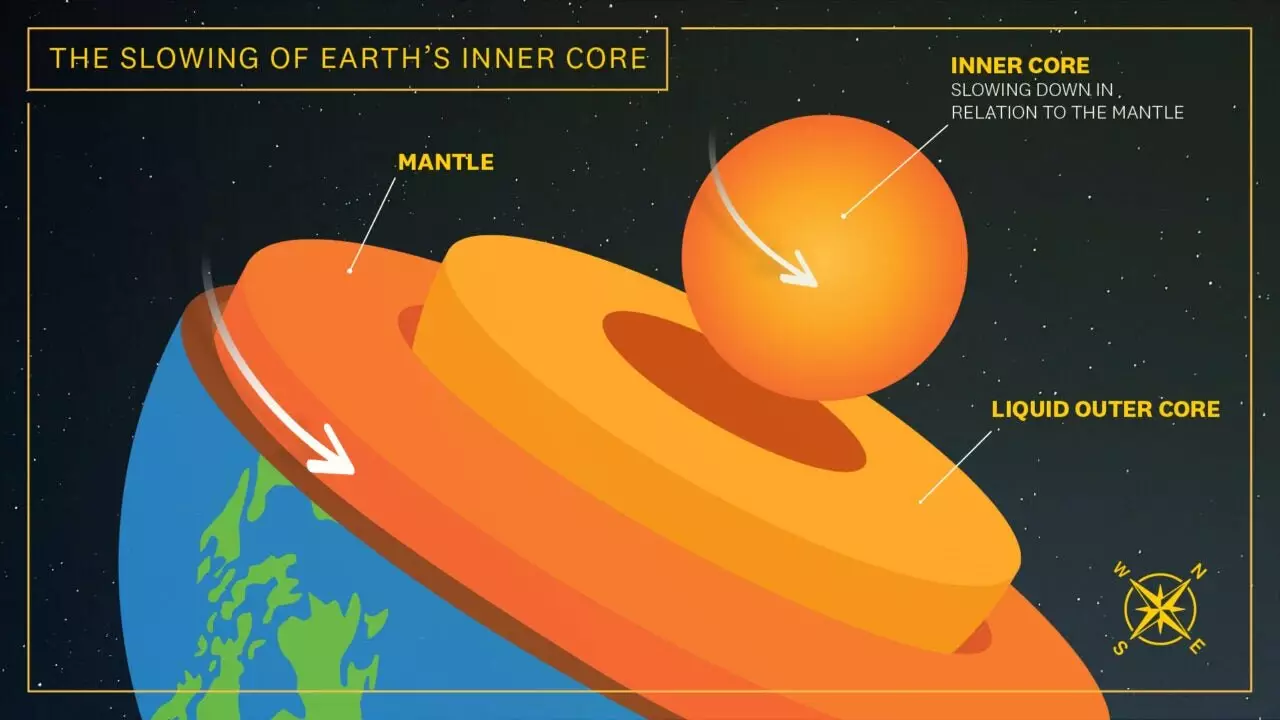University of Southern California scientists have recently published research in Nature demonstrating that the Earth’s inner core is slowing down in relation to the planet’s surface, contrary to previous beliefs. This discovery has sparked much debate within the scientific community, as previous studies had indicated that the inner core rotates faster than the surface of the Earth.
The research conducted by USC scientists showed clear evidence that the inner core of the Earth began slowing down around 2010, a significant finding that challenges previous theories. This discovery was made possible through the analysis of seismic data and observations signaling a distinct pattern of slowdown in the inner core’s movement.
The inner core of the Earth is a solid iron-nickel sphere, roughly the size of the moon, located more than 3,000 miles beneath the Earth’s surface. It is surrounded by the liquid iron-nickel outer core and poses a challenge for researchers due to its inaccessibility. Scientists rely on seismic waves from earthquakes to study the movement of the inner core.
The USC scientists utilized a novel method involving waveforms and repeating earthquakes to analyze the inner core’s movement. By compiling and studying seismic data from various sources, including repeating earthquakes and nuclear tests, the researchers were able to identify the slowdown in the inner core’s speed. This slowdown was attributed to factors such as the churning of the liquid outer core and gravitational tugs from the rocky mantle.
The discovery of the inner core’s slowdown has raised questions about its impact on the Earth’s surface. While the exact implications are still unknown, it is speculated that the backtracking of the inner core could potentially alter the length of a day by fractions of a second. However, these changes are so minute that they are barely perceptible amidst the natural fluctuations of the Earth’s oceans and atmosphere.
The USC scientists plan to continue their research to further understand the trajectory of the inner core and the reasons behind its shifting movement. This ongoing research aims to provide more detailed insights into the inner workings of the Earth’s core and shed light on the dynamic processes that govern our planet. As Dean’s Professor of Earth Sciences John Vidale stated, “The dance of the inner core might be even more lively than we know so far.”
The recent discovery of the Earth’s inner core slowing down has challenged existing scientific theories and highlighted the need for further research in this field. The findings of the USC scientists have opened up new avenues for exploration and understanding of our planet’s complex inner workings, paving the way for future discoveries in the field of Earth sciences.


Leave a Reply